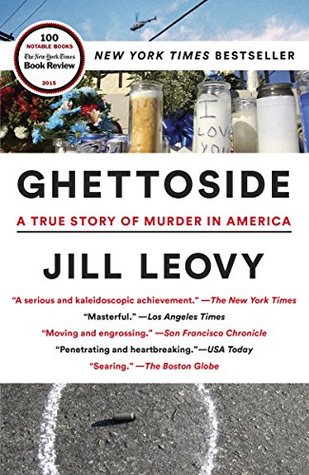More on this book
Community
Kindle Notes & Highlights
Studying Natchez, Mississippi, in the same period, a racially mixed team of social anthropologists observed that “the injury or death of a Negro is not considered by the whites to be a serious matter.”
It hauls masses of black men through its machinery but fails to protect them from bodily injury and death. It is at once oppressive and inadequate.
Society had changed a great deal during the civil rights movement and the decades that followed. Criminal justice had changed, too. But the speed and certainty of adequate punishment for the murderers of black men remained a weak point.
Death penalty studies, for example, have found that the race of defendants matters less than the race of victims. People who kill whites are more likely to be sentenced to death; people who kill blacks get lighter penalties.
Fear made collaborators of people who had committed no crimes.
Many homicide witnesses shed tears when confronted by police. They would apologize as they yanked closed the curtains or requested in sheepish undertones that police not come to their houses in daylight. Very often, police knew nothing of what witnesses were going through.
When your business dealings are illegal, you have no legal recourse.
Some bounced from hustle to hustle. They bartered goods, struck deals, and shared proceeds, all off the books. Violence substituted for contract litigation.
Young men in Watts frequently compared their participation in so-called gang culture to the way white-collar businesspeople sue customers, competitors, or suppliers in civil courts. They spoke of policing themselves, adjudicating their own disputes.
Fundamentally gangs are a consequence of lawlessness, not a cause.
The tendency for people to band together when state power is weak is so inevitable it can even seem innate.
Without law, people use violence collectively to settle scores and right wrongs, and commonly refer to violence as their own law.
Skaggs learned to think of his job as persuasion: selling formal law to people who distrusted it and answered to another authority—shadow law.
Arenas, for example, accused the division’s black residents of inferior values. But Skaggs had concluded that many residents connected to Watts murder cases were ordinary people, trapped by conditions of lawlessness.
Surgeons could almost predict the timing of new trauma calls by watching friends of victims depart the waiting room, rushing out to take revenge. Soon after, surgeons would be summoned to another “Code Yellow.”
What Pritchett didn’t know was how many scores of times he had already heard her version of the old lament—“just another black man down.” Nor did she know that by this time, for Skaggs, the phrase was a battle cry.
White people “had the law,” to quote a curious phrase that crops up in historic sources. Black people didn’t. Formal law impinged on them only for purposes of control, not protection. Small crimes were crushed, big ones indulged—so long as the victims were black.
This was the fundamental fact of Bryant Tennelle’s death. Other elements may have contributed—the neighborhood in which he lived, the company he chose to keep, the hat he was wearing that evening. But for all that—and for all the rhetoric about bad choices, senseless acts, at-risk behavior, and so forth—what killed Bryant was the one fact about himself that he could not change: he was black.
In fact, black people had remained more crowded together and isolated much longer than any other racial or ethnic group in America. “Black segregation was permanent, across generations,” said the sociologist Douglas Massey.
Black people couldn’t outrun segregation if they tried. It followed them, reinforced by invisible dynamics, like real estate steering.
In the year 2000, decades after the courts struck down restrictive covenants, black people in Los Angeles were no more likely to have white neighbors than they had been in 1970.
Homicide thrives on intimacy, communal interactions, barter, and a shared sense of private rules.
By contrast, America’s lonely, atomized upper-middle-class white suburbs were not homicidal. Their highly mobile occupants were not much involved with each other. They didn’t depend on one another to survive. The occasional condominium board meeting might get ugly, but mostly there was enough law in such places—enough expectation of a legal response to violence—to keep the occasional neighbor dispute from getting out of hand. And if there wasn’t—for example, if a young man grew tired of his brawling high school chums—moving somewhere else was easy enough.
Yadira Tennelle had to force her mind to conform to this new, hard reality, to accept that Bryant’s life had been lived, that he was now “a sentence with a period,” as she put it.


